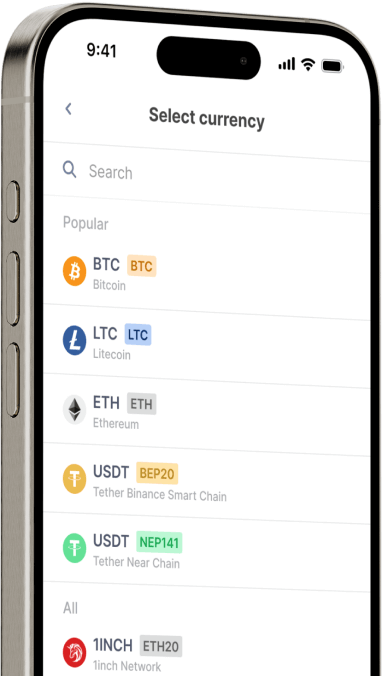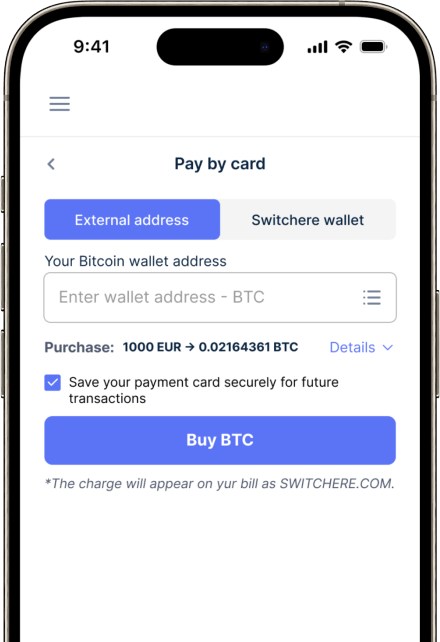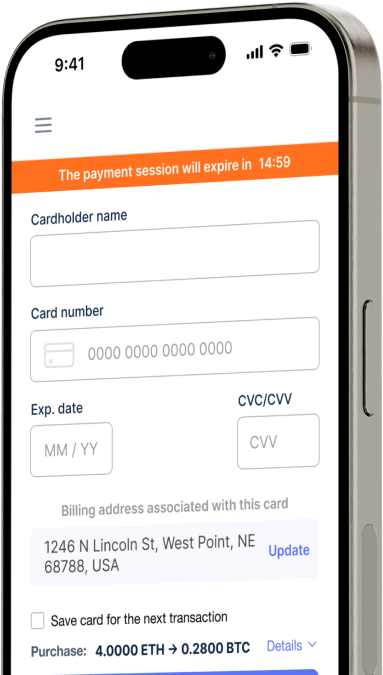Конвертуйте
Swiss Franc (CHF) на Polkadot (DOT) миттєво
Купуйте Polkadot (DOT) за допомогою Swiss Franc (CHF) легко на Switchere і отримуйте вигоду від швидких і безпечних транзакцій.
Близько
Polkadot (DOT)
Polkadot (DOT) - це блокчейн-протокол нового покоління, розроблений для полегшення безпрецедентної міжланцюгової комунікації та інтероперабельності в рамках масштабованої, безпечної, багатоланцюгової архітектури. Його основна мета - надати можливість різним блокчейнам, відомим як парачейн, обмінюватися інформацією та транзакціями без довіри. Це вирішує серйозну проблему ізольованості блокчейну, коли окремі мережі працюють ізольовано. Основна технологія Polkadot базується на центральному ланцюжку ретрансляції, який забезпечує спільну безпеку і консенсус для підключених параланцюжків. Ці параланцюги можуть бути налаштовані для конкретних випадків використання, побудовані з використанням гнучкого фреймворку Substrate, що сприяє створенню різноманітної екосистеми спеціалізованих ланцюгів.
Нативний токен DOT відіграє кілька важливих ролей в цій екосистемі цифрових активів. Він використовується для управління мережею, дозволяючи власникам брати участь у прийнятті рішень щодо оновлення протоколів та розподілу коштів. DOT також необхідний для стейкінгу в рамках механізму консенсусу Nominated Proof-of-Stake (NPoS) від Polkadot, де номінанти підтримують валідаторів, щоб захистити мережу і отримати винагороду. Крім того, токени DOT пов'язані з проектами оренди слотів парачейн через механізм аукціону, що дозволяє їм підключатися до Relay Chain і отримувати вигоду від об'єднаних функцій безпеки та інтероперабельності. Ця модель токеноміки забезпечує активну участь і узгодження з довгостроковим здоров'ям мережі, позиціонуючи Polkadot як базову інфраструктуру Web3 для дійсно взаємопов'язаної системи цифрових книг.
Купуйте інші 150+ криптовалют за допомогою Swiss Franc (CHF)
Інші монети за Swiss Franc (CHF)
-
CHF на ZRX
-
CHF на 1INCH
-
CHF на AAVE
-
CHF на ACH
-
CHF на ALGO
-
CHF на TLM
-
CHF на ANKR
-
CHF на APE
-
CHF на NFT
-
CHF на API3
-
CHF на APT
-
CHF на ARPA
-
CHF на AUDIO
-
CHF на AVAX
-
CHF на AVAX
-
CHF на AXS
-
CHF на BADGER
-
CHF на BAL
-
CHF на BNT
-
CHF на BAT
-
CHF на BNB
-
CHF на BSW
-
CHF на BSV
-
CHF на BLUR
-
CHF на BONE
-
CHF на CTSI
-
CHF на CELR
-
CHF на CELO
-
CHF на CEL
-
CHF на LINK
-
CHF на CHZ
-
CHF на CHR
-
CHF на C98
-
CHF на COMP
-
CHF на CFX
-
CHF на PEOPLE
-
CHF на CVX
-
CHF на ATOM
-
CHF на CTC
-
CHF на CRV
-
CHF на DAI
-
CHF на DASH
-
CHF на MANA
-
CHF на DENT
-
CHF на DGB
-
CHF на DYDX
-
CHF на XEC
-
CHF на EOS
-
CHF на ETC
-
CHF на ENS
-
CHF на ETHW
-
CHF на FET
-
CHF на FIL
-
CHF на FLOKI
-
CHF на GALA
-
CHF на GNO
-
CHF на ONE
-
CHF на HBAR
-
CHF на HOT
-
CHF на HOOK
-
CHF на ICX
-
CHF на ILV
-
CHF на IMX
-
CHF на INJ
-
CHF на ICP
-
CHF на IOST
-
CHF на IOTX
-
CHF на JASMY
-
CHF на JST
-
CHF на KAVA
-
CHF на KCS
-
CHF на KSM
-
CHF на KNC
-
CHF на LDO
-
CHF на LQTY
-
CHF на LPT
-
CHF на LOOKS
-
CHF на LRC
-
CHF на LUNA
-
CHF на MKR
-
CHF на MASK
-
CHF на EGLD
-
CHF на ALICE
-
CHF на NEAR
-
CHF на XEM
-
CHF на NEXO
-
CHF на NOT
-
CHF на NMR
-
CHF на OKB
-
CHF на OMG
-
CHF на ONT
-
CHF на EDU
-
CHF на OP
-
CHF на OGN
-
CHF на CAKE
-
CHF на PAXG
-
CHF на PENDLE
-
CHF на DOT
-
CHF на POL
-
CHF на QTUM
-
CHF на QNT
-
CHF на RDNT
-
CHF на XRD
-
CHF на RVN
-
CHF на REN
-
CHF на RSR
-
CHF на RLC
-
CHF на RPL
-
CHF на SFP
-
CHF на SHIB
-
CHF на SKL
-
CHF на SXP
-
CHF на STND
-
CHF на STG
-
CHF на XLM
-
CHF на GMT
-
CHF на STORJ
-
CHF на STMX
-
CHF на SUSHI
-
CHF на SNX
-
CHF на USDT (Polygon)
-
CHF на USDT (AVAC)
-
CHF на USDT (BEP20)
-
CHF на USDT (ERC20)
-
CHF на USDT (SPL)
-
CHF на USDT (NEP141)
-
CHF на USDT (FA2)
-
CHF на USDT (TRC20)
-
CHF на USDT (JETTON)
-
CHF на XTZ
-
CHF на GRT
-
CHF на SAND
-
CHF на TFUEL
-
CHF на THETA
-
CHF на RUNE
-
CHF на TON
-
CHF на TUSD (BEP20)
-
CHF на TUSD (TRC20)
-
CHF на TWT
-
CHF на UOS
-
CHF на UMA
-
CHF на UNI
-
CHF на USDC (Polygon)
-
CHF на USDC (SPL)
-
CHF на USDC (OP)
-
CHF на USDC (BEP20)
-
CHF на USDC (AVAC)
-
CHF на USDC (ARB)
-
CHF на USDC (ERC20)
-
CHF на VET
-
CHF на VRA
-
CHF на WAXP
-
CHF на WOO
-
CHF на WLD
-
CHF на WBTC
-
CHF на WMINIMA
-
CHF на XDC
-
CHF на YFI
-
CHF на YGG
-
CHF на ZIL
Як купити Polkadot (DOT)?
Поширені запитання
-
Який найпоширеніший спосіб купити Polkadot (DOT) за швейцарські франки (CHF)?
Найпоширеніший метод — це використання регульованої криптовалютної біржі, яка пропонує пряму торгову пару CHF/DOT або підтримує депозити в CHF. Користувачі зазвичай поповнюють свої рахунки через швейцарський банківський переказ (з використанням SIX Interbank Clearing). Цей процес слугує фіатним шлюзом і вимагає дотримання норм KYC/AML. Вибір платформи, що відповідає вимогам FINMA, є вирішальним для безпечної торгівлі та конвертації вашої фіатної валюти в цей цифровий актив.
-
Чому міжланцюгова сумісність Polkadot важлива для активів, придбаних за CHF?
Архітектура Polkadot, побудована на фреймворку Substrate, дозволяє різним блокчейнам (парачейнам) безпечно спілкуватися та передавати цінності. Коли ви конвертуєте CHF в DOT, ви не просто купуєте один актив; ви отримуєте доступ до цілої екосистеми, де активи та дані можуть безперешкодно переміщатися між спеціалізованими парачейнами. Ця міжланцюгова сумісність розширює корисність та потенційні застосування вашого цифрового активу за межі одного блокчейну.
-
Як модель спільної безпеки Polkadot додає цінності моїй інвестиції в DOT?
Модель спільної безпеки Polkadot означає, що всі підключені блокчейни, відомі як парачейни, захищені валідаторами основної Relay Chain. Коли ви купуєте та утримуєте DOT, ви робите внесок в економічну безпеку всієї цієї інтероперабельної мережі. Ця надійна система безпеки робить екосистему привабливішою для розробників, що потенційно збільшує попит та корисність токена DOT з часом, коли долучається більше проектів.
-
Які основні функції токена DOT після його придбання за CHF?
Токен DOT має три основні функції в екосистемі Polkadot: 1) Управління, що дозволяє власникам голосувати за оновлення мережі та пропозиції казначейства. 2) Стейкінг, де ви можете брати участь у консенсусі Nominated Proof-of-Stake (NPoS) для захисту Relay Chain та отримання винагород. 3) Бондинг, що передбачає блокування DOT для забезпечення слота парачейну в мережі. Ці функції роблять DOT невід'ємною частиною функціонування та безпеки мережі.
-
Які аспекти безпеки є життєво важливими при зберіганні DOT, купленого за швейцарські франки?
Після завершення вашої блокчейн-транзакції з CHF в DOT критично важливо перемістити ваші активи з біржі на особистий цифровий гаманець, де ви контролюєте приватні ключі. Для довгострокового зберігання або стейкінгу DOT апаратний гаманець забезпечує найвищий рівень безпеки від онлайн-загроз. Завжди надійно створюйте резервну копію вашої сід-фрази в офлайні та ніколи не діліться нею. Це гарантує, що ви зберігаєте повний суверенітет над своїм цифровим активом.
-
Які типові комісії при використанні фіатного шлюзу CHF для придбання DOT?
Користувачі зазвичай можуть очікувати три типи комісій: 1) Комісія за депозит для банківського переказу в CHF, яка часто є низькою або нульовою для внутрішніх швейцарських переказів. 2) Торгова комісія на криптовалютній біржі, яка зазвичай становить невеликий відсоток від вартості в книзі ордерів (модель мейкер/тейкер). 3) Комісія за виведення з мережі для переміщення DOT з біржі на ваш особистий цифровий гаманець, яка покриває вартість блокчейн-транзакції.




